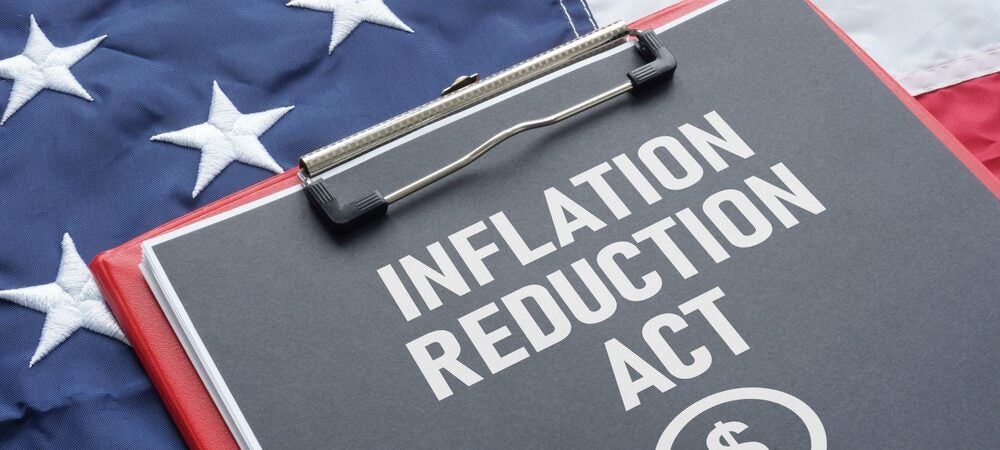Energy transition incentives in the 2022 Inflation Reduction Act (IRA) have caused some uproar in US-EU trade relations and within the EU. The intra-EU discussion has been disheartening in that, while supposedly reactive to the IRA, it seems to have disregarded the IRA’s most important lessons.
Taking as an example one category of activity that the IRA seeks to catalyze – manufacturing of solar energy equipment – what are those key lessons and how are EU policymakers missing them?
Industrial policy lesson: help with operating expenses, not just capital expenses, is essential.
Capital formation is not the main barrier to growing solar manufacturing in Europe and North America. The “cost penalty” associated with manufacturing in the United States versus manufacturing in Asia is large enough that, prior to the IRA’s enactment, an investor awarded a “free” U.S. solar cell or module factory could have expected to operate that factory at a continuous loss as far as the eye could see. This is why the U.S. policy mix, post-IRA, now includes per-unit-of-output benefits properly sized to close the ongoing gap. Cap-ex help may be necessary, but it is nowhere near sufficient. This applies in the EU as well.
The EU discussion, sadly, has been almost exclusively about cap-ex incentives. This was apparent from arguments about how much EU-level money was available, whether various unused amounts of structural funds could be repurposed, whether new borrowing by the EU itself could occur, etc. Rather than looking for a specific number of euros to award for factory-building, the EU and its Member States could have made space (by amending state aid rules) for new factories to operate for ten or more years free of corporate income taxation. This step alone would cover a good portion of the ongoing cost disadvantage of manufacturing in Europe versus manufacturing in Asia.
Political economy lesson #1: the easiest-to-use fiscal tactic is tax expenditures that don’t forgo much actual revenue.
The $369 billion number assigned to the IRA’s renewable energy title is not real. It reflects scorers’ guesses about private companies’ likely behavior (increasing activity in response to incentives), about corporate profits that theoretically would result, and about the “revenue loss” associated with not taxing (or lightly taxing) those profits over a 10-year period. In the case of solar manufacturing, the calculations mostly involve new factories that, absent the IRA, would never be built. So the tax revenue the US government is “foregoing” through, for example, the new Section 45X credit (a subset of the $369 billion) is not revenue that it could, in a counter-factual scenario, hope to collect. Congressional scoring doesn’t use this kind of rigorous counter-factual analysis, but legislators understand that the actual revenue cost is essentially zero.
Dollars like these are the politically-easiest ones to “spend” on industrial policy. When the government promises not to collect money it could never collect anyway, no one else’s taxes have to rise. Democrats passed the IRA on their own, but Republicans’ motivation to sabotage it will be muted.
Deficit hawks understand that the “foregone” tax revenues were never really accessible anyway. And small-government conservatives might not hate the concept of new industrial facilities being born inside a brand new low-corporate-income-tax bubble within the US economy.
EU policy discussions show no sign of heeding this lesson. Instead of alleviating corporate taxes imposed at the Member State level, policymakers focused on identifying EU-level resources which quickly proved to be a morass. Delivering incentives through the tax system works differently in EU Member States than in the United States, but it is not impossible.
Political economy lesson #2: address deployment incentives and manufacturing incentives in tandem.
Green power generation and green manufacturing are linked politically. Significant government incentives are still needed to increase renewables’ share of a developed country energy mix. These deployment incentives, while justified, are expensive. Political support for them is difficult to sustain when the equipment being connected principally comes from – and the related manufacturing jobs primarily exist in – another country. The IRA political strategy recognized this linkage and credibly set out a vision of new solar installations full of made-in-America equipment. The EU’s latest commitments on solar deployment were made independently of any strategy or vision for related manufacturing.
Political economy lesson #3: Worrying too much about where investments will locate is a recipe for getting nothing done.
The IRA passed with exclusively Democratic support, even though it was apparent that much of the new manufacturing investment would land in America’s “red” states. In the EU, some of the most promising early threads of public conversation on a robust industrial policy response seem to have fallen victim to infighting: there was no way to guarantee that incentivized manufacturing investments would spread evenly across poorer and richer Member States.
There are understandable reasons, especially after Brexit, for EU policymakers to take “unity” into account in everything they do. The US has a milder version of this “unity” problem and is accordingly better-situated for deploying industrial policy at a continental level. Challenges notwithstanding, the EU needs to find a way forward. A successful energy transition seems imperative, and it will need expensive government incentives, and public support for those will be difficult to achieve (much less sustain) if all the new renewable energy installations are full of equipment made outside Europe.
If the EU draws the right lessons from America’s experience with the IRA, and applies those lessons strategically in its own industrial policy formation, success is not out of reach. Circumstances are more challenging in some respects but easier in others, given that carbon pricing is already present in the EU.
A re-set and reinvigoration of the EU policy discussion is in order.
John Magnus, President, TradeWins LLC.

